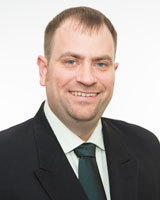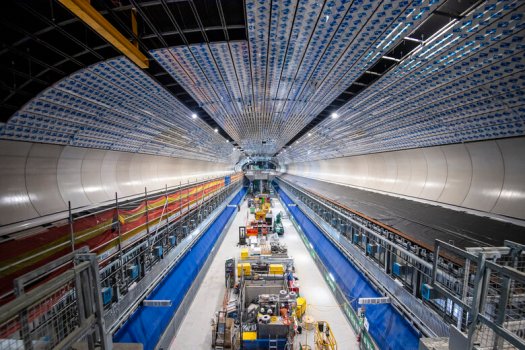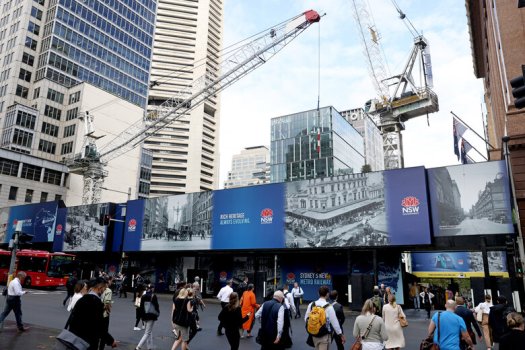The NSW government will establish one-stop transport and service centres across the state as part of its vision for the future of transport.

‘Future Transport hubs’ will be piloted in Parramatta, Chatswood, Wollongong and Coffs Harbour, Premier Dominic Perrottet says.
The premier announced the pilots as he unveiled the state’s Future Transport Strategy, which replaces the 2018’s Future Transport 2056, taking into account factors like pandemics, energy transition, the digital economy, climate change and projections the population will hit 11.5 million by 2061.
“The strategy includes a vision to create connected 30-minute cities and convenient 15-minute neighbourhoods, starting with the piloting of Future Transport Hubs … that will provide commuters with a one-stop-shop for a range of essential services,” Mr Perrottet said last week.
Seamless mobility
Senior lecturer in transport and logistics management at the University of Sydney, Dr Geoffrey Clifton, says the concept of a transport hub involves having transport, parking, shops, offices, cafes, parks, activity centres, bike share, rental and ride share spaces, and grocery and parcel pick up all in the one location.
“These are already forming naturally,” Dr Clifton told Government News. “Transport hubs are about doing it on a more thoughtful basis, and thinking about how we can build it all – it brings together private sector and government, and makes things as seamless as possible.
If you want to know what it might look like in 2036, you’ve gone to work at the nearest town centre where you’ve hired an office for a few hours, there you can pick up some groceries and a parcel that’s been delivered. Meantime your son comes back from university on the train and your daughter comes in on an e-ride share car. You all meet up for dinner or a bike ride and then go home.
Dr Geoffrey Clifton
“If you want to know what it might look like in 2036, you’ve gone to work at the nearest town centre where you’ve hired an office for a few hours, there you can pick up some groceries and a parcel that’s been delivered. Meantime your son comes back from university on the train and your daughter comes in on an e-ride share car. You all meet up for dinner or a bike ride and then go home.”

Local government has played a central role in planning transport hubs in some part of Europe where the concept is being embraced, such as the Netherlands and Germany, he says.
“These countries started with local councils drawing a map where existing bike hire spots and parcel pick ups are, and looking to see the gaps,” he says.
But Dr Clifton warns it’s critical that transport hubs are thoughtfully planned, otherwise they risk simply creating more congestion.
Six Cities
The transport strategy contains an emphasis on sustainability, liveability and smart infrastructure and is based on the concept of a six cities region encompassing the Eastern Harbour, Central River, Western Parkland, Lower Hunter, Greater Newcastle, Central Coast and Illawarra-Shoalhaven.
It also sets long and short term targets to decarbonise the transport sector, with a commitment to net zero transport operations by 2035.

The plan proposes doing this by electrifying buses, ferries, corporate vehicles and non-passenger vehicle fleets, and setting a 50 per cent electric vehicle procurement target for Transport’s own passenger fleet by 2026, and 100 per cent by 2030.
It will also assess trialing a hydrogen train on the NSW train network and prioritise electric ferries in new ferry procurement and refits.
Digital connectivity is another key theme in terms of enhancing on-time running, demand management and automated vehicles.
A ‘realistic vision’
Although the strategy is light on details and specific plans, Dr Clifton says it presents a realistic vision of what can be done to improve mobility and transport between cities.
“In terms of the projects, that’s almost less important than the vision at this stage,” he says.
The strategy is excellent, but it’s a matter of seeing how things develop on the ground later
Dr Geoffrey Clifton
“The more detailed planning is still to be done in terms of how the vision gets delivered, and is going to take longer to work out.
“They’ve got the vision, now it’s about putting it into practice. The strategy is excellent, but it’s a matter of seeing how things develop on the ground.”
Dr Geoffrey says the current tranpsort network won’t cope with projected population growth, and policy makers will need to plan beyond 2030.
“The government’s got good plans for transport links and infrastructure up to 2030, that’s when all the projects underway will be delivered,” he says.
“But where Australia’s fallen over many times in the past is that we have a round of building infrastructure, then nothing happens for another ten years and we lose the expertise and momentum.
“Coming coming up with an extra set of goals for 2040 now is important so, the planning can be done.”





Aaah the smart city. Maybe lets hold the bus just for a moment…Lets first secure appropriate energy load to maintain the grid first.. With all the electric vehicles (assuming purchase prices drop significantly and as the Minister said ‘no one is embarrassed by the transition’ (e.g. you and I are not at a financial loss to transition…) about to hit our dysfunctional grid to recharge, we have a lot of questions and work to do yet…
Leaving aside that Coffs Harbour isn’t in the Six Cities region, it will be interesting to see what they come up with for the pilot transport hub there. There are no commuter trains, no city bikes or scooters, infrequent buses, and limited ride-share/taxi services. Perhaps the hub will have a shop that sells good walking shoes.
Transport hubs. nothing new about this We had cities that effectively grew up around Transport hubs.
But our Governments Planning regime has moved us to the Urban sprawl. Endless Car dependent suburbs. no public Transport or amenities and now we are talking about Transport hubs.
This just Shows We are not addressing the underlying planning issues well
We taken the spotlight from Poor suburban / urban design strategies and and saying we will have transport hubs!
This sounds like there is more profit to have transit related developments. TRD is a good tool at a local and sub-regional level
But Fix the Sprawl First and then the announced Hubs might not have a purpose!
Sydney might be spared the developers bulldozer and we will have livable cities.